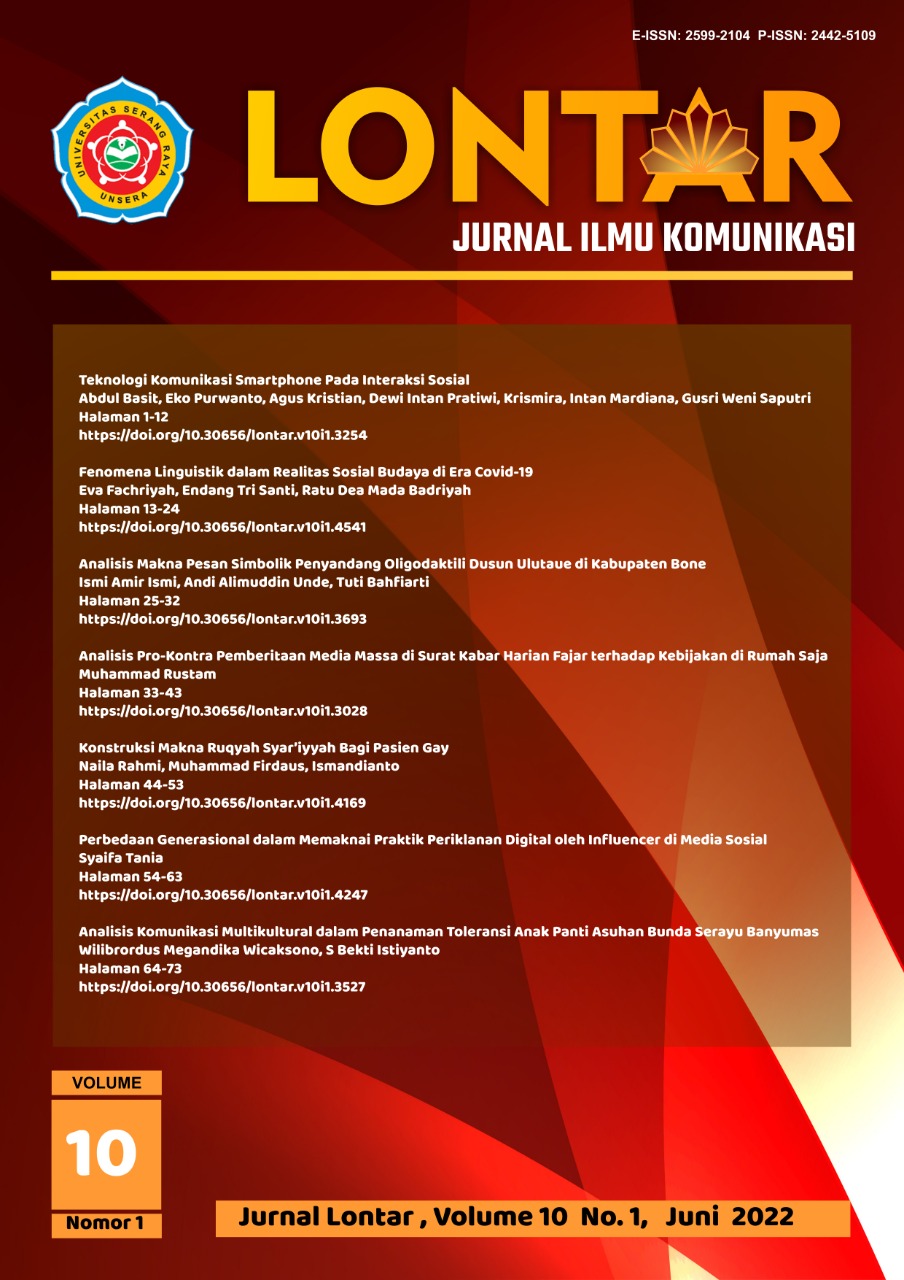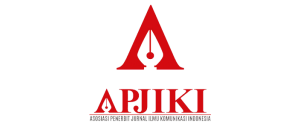Konstruksi Makna Ruqyah Syar’iyyah Bagi Pasien Gay
DOI:
https://doi.org/10.30656/lontar.v10i1.4169Kata Kunci:
construction, patient, gay, riqyahAbstrak
Ruqyah syar’iyyah method for gay patient is one of interesting phenomenon that currently happening around society. This methods is still rare to be found, especially when it comes to treat patient that find their self as gay. Gay existency in Indonesia is still under debate among society. The contradiction created because of ruqyah syar’iyyah method that being told could help patient cured is creating another meaning for each patient itself. The purpose of this research is to understand patient motive, meaning of ruqyah syar’iyyah method for patient and the communication experience for patient. This study uses qualitative research method with phenomenology approach also uses snowball technique to get 4 informants as the subject of this research. Data collection done through in-depth interview, observation and documentation. Data analysis technique uses interactive data ana While for the data validation check, researcher uses triangulation and extension of participation method.The result of this study shown that first, the reason why gay patient doing ruqyah syar’iyyah method is split in two, there are past motive (because motives) (1) uncomfortable feelings (2) information from social media and (3) the willing to change, future motive (in order to motives) (1) self-intropection (2) getting close to god (3) having partner and heredity. Second, the meaning of ruqyah syar’iyyah for gay patient is Islamic law based, as a process of hijrah, and solution for variative disease. Third, the communication experience for patien is split in two which are happy and unhappy. Happy communication experience there are well accepted, getting new friends and getting peace. While for bad communication experience there are self-personal (feeling unwell), shunned by past friends, and getting underestimated
Referensi
Adawiyah, D. R., & Setiawan, F. (2017). Ambang Deteksi Dan Preferensi Rasa Umami Dalam Model Pangan. Jurnal Teknologi Dan Industri Pangan, 28(1), 55–61. https://doi.org/10.6066/jtip.2017.28.1.55
Ahmadi, A. (2009). Psikologi Umum (R. Cipta (ed.)).
Al-’Iedan, ‘Abdullah bin ‘Abdul ‘Aziz. (2018). Ruqyah: Mengobati Jasmani & Rohani Menurut al-Qur’an dan as-Sunnah. Pustaka Imam Syafi’i.
Alwasilah, C. (2011). Pokonya Kualitatif. Pustaka Jaya.
Arifin, N. (2018). Konstruksi Makna Bagi Wanita Pengguna Vape di Kota Pekanbaru. Journal of Chemical Information and Modeling, 53(9), 1689–1699.
Awaliah, S., & Masduki, M. (2019). Kontestasi Dan Adaptasi Otoritas Keagamaan Tradisional: Mencermati Visi Dakwah Pesantren Darul Falah Bangsri Jepara. Jurnal Dakwah Risalah, 30(1), 109. https://doi.org/10.24014/jdr.v30i1.7453
Basri hasan. (2005). Penjelasan Lengkap tentang Ruqyah. Ghoib Pustaka.
Burhan, B. (2010). Metode Penelitian Kualitatif. PT. Raja Grafindo.
Ghufron, M. Nur, R. R. (2012). Teori-Teori Psikologi (Ar-Ruzz Me).
Ismandianto, & Isnaini. (2020). Analisis Semiotika Sosial M.A.K Halliday Pemberitaan Kontroversi Kafir di Media Online Kompas.com dan Republica.co.id. Komunikasiana: Journal of Communication Studies, 2(2), 97–109.
Junita, J., Mualimin, M., & HM, A. (2021). Dakwah Kultural Dalam Tradisi Maantar Jujuran Suku Banjar Di Samuda Kotawaringin Timur. Jurnal Dakwah Risalah, 31(2), 138. https://doi.org/10.24014/jdr.v31i2.10581
Kuswarno, E. (2009). Metodologi Penelitian Komunikasi Fenomenolo-gi: Konsepsi, Pedoman, Dan Contoh Penelitian Fenomena Pengemis Kota Bandung. Widya Padjadjaran.
Littlejohn, S. W. K. A. F. (2011). Teori Komunikasi. Salemba Humanika.
Margaret, P. M. (2004). Sosiologi dengan Pendekatan Membumi. Penerbit Erlangga.
Mufid, M. (2009). Etika Filsafat Komunikasi. Prenada Media Group.
Muhammad, F. (2017). Studi fenomenologi tentang makna ideologi khilafah dan politik aktivis izbut tahrir di pekanbaru. Fenomenologi, 8(1), 1–16.
Mulyana, D. (2005). Ilmu Komunikasi Suatu Pengantar. Remaja Rosdakarya.
Nur istiani, A. (2015). Kontruksi Makna Hijab Fasion Bagi Muslim Blogger Muslim. Jurnal Kajian Komunikas, 3(1), 48–55. http://jurnal.unpad.ac.id/jkk/article/viewFile/7393/3396
Nurdin, A. (2020). Teori Komunikasi Interpersonal. Kencana.
Rahardjo, D. M. (2016). Teori Komunikasi. Gava Media.
Sobur, A. (2014). Filsafat Komunikasi: Tradisi dan Metode Fenomenologi. Remaja Rosdakarya.
Syarifuddin, A. (2011). Penerapan Model Pembelajaran Cooperative Belajar Dan Faktor-Faktor Yang Mempengaruhinya. Ta’dib:Journal of Islamic Education (Jurnal Pendidikan Islam), 16(01), 113–136. https://doi.org/10.19109/tjie.v16i01.57
West, R. L. H. T. (2008). Pengantar Teori Komunikasi. Salemba Humanika.
Wiraman, W. (2016). Citra dan Presentasi Tubuh. Alaf Riau.
Unduhan
Diterbitkan
Terbitan
Bagian
Lisensi
By submitting an article to the journal, the author(s) agree to transfer the published article's copyright to the journal, which will act as the publisher. This means the journal will have the right to publish the article in various forms, including reprints. The journal will maintain the publishing rights to the published articles.
In line with the license, authors and third parties (readers, researchers, and others) are allowed to share and adapt the material. In addition, the material must be given appropriate credit, provided with a link to the license, and indicated if changes were made. If authors remix, transform, or build upon the material, authors must distribute their contributions under the same license as the original.






